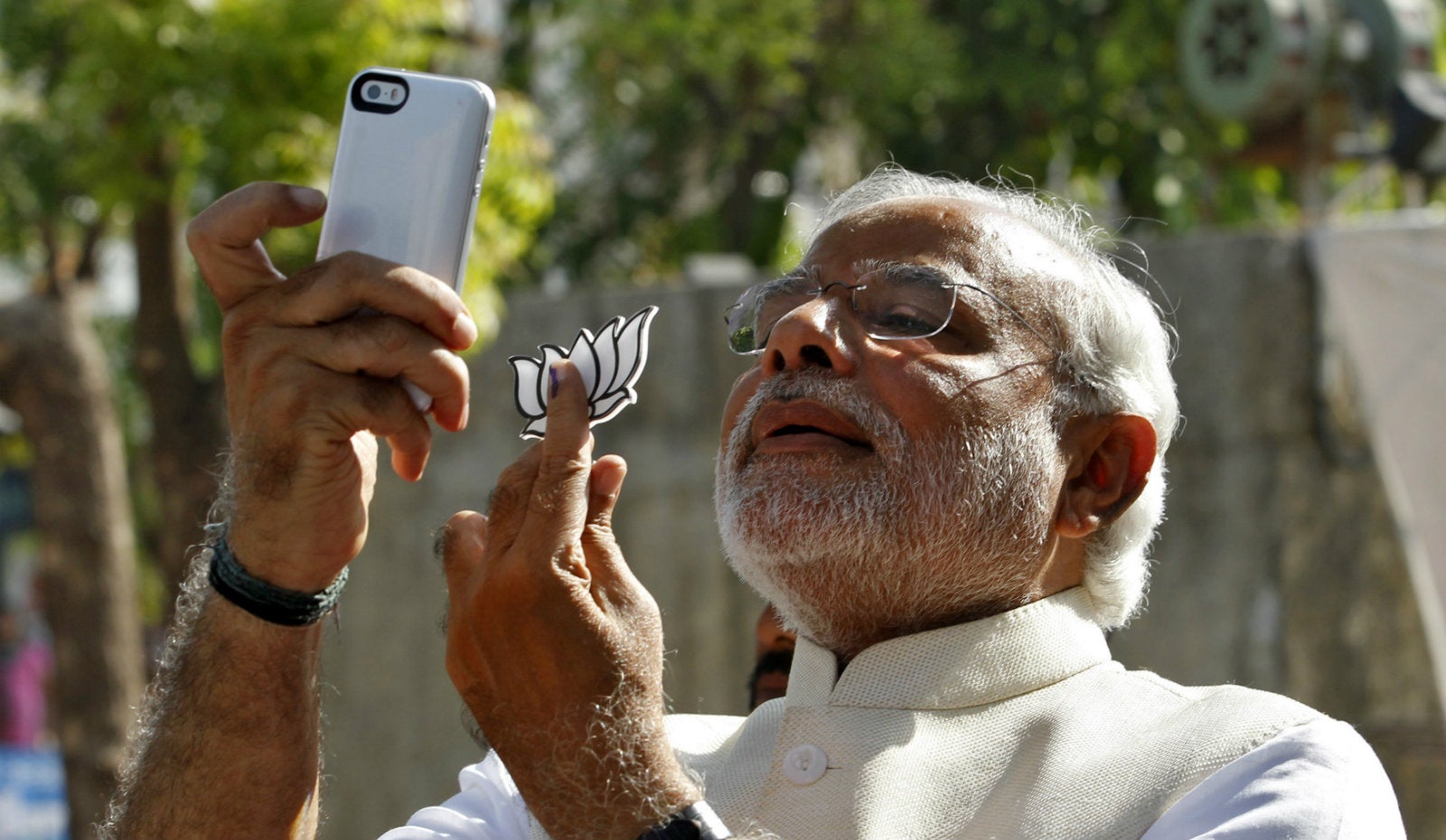From global outcast to benign ruler: Narendra Modi on Twitter, Est. 2009
There are celebrities on Twitter, and then there are Twitter-made celebrities. India’s prime minister sort of falls in the second category.


There are celebrities on Twitter, and then there are Twitter-made celebrities. India’s prime minister sort of falls in the second category.
A new research paper by scholars at the University of Michigan points out that Twitter has crafted Narendra Modi into the leader that he is today. The research, published (pdf) in the Economics & Political Weekly magazine, has analysed Modi’s Twitter journey from May 1, 2009, to Feb. 18, 2015 , through the handle @narendramodi.
Modi joined the micro-blogging website in January 2009, when he was the chief minister of Gujarat. Today, Modi has 18.3 million followers—and counting—one of the highest following for any political leader globally.
“Thoughtful construction of messages on Twitter has helped Modi build a powerful online brand, allowing him to transcend a problematic past and emerge as a techno-savvy global leader who speaks directly to his electorate,” the paper authored by Joyojeet Pal, Priyank Chandra and V G Vinod Vydiswaran, said.
Before taking office as prime minister, Modi was the chief minister of the western Indian state of Gujarat for 13 years. During his tenure there, he received much praise for Gujarat’s development. He was also blamed for not doing enough to control the 2002 communal riots that killed over 1,000 people—800 of them Muslims.
It was only imperative for him to clean his slate before presenting himself as a development-focused, tech-savvy prime ministerial candidate.
Here’s how his Twitter journey unfolded:
Early days
Modi began building his social media profile on Twitter a few months before the 2009 general elections. He spent the next three years creating a nationalistic appeal—much of this was done by his choice of words. For instance, hashtags #IndiaDevelops and #2facedCongress were among his most popular ones during the period.
“Although many of his early tweets were sent by a third person on his behalf, he quickly switched to first-person in this phase,” the report said. Modi was also tapping into the deepening welter of anger against the Manmohan Singh-led UPA government and the Congress party.
By 2011, as his following picked up, Modi also tweeted about mythological figures, that struck a chord with Indians. He also invoked national icons such as Bhagat Singh, Sukhdev, and Rajguru. Another of his preferred topics was India’s massive tax-evasion crisis and black money in Swiss banks.
By 2012, when the Congress party under Manmohan Singh began facing backlash for various corruption scandals, Modi’s top tweets were only aimed at confronting the Congress party, including raking up the row over Sonia Gandhi’s foreign nationality. “In the 10th-most-popular retweet, Modi made an infantilising reference to Rahul Gandhi. Rahul’s mother, Sonia, was the head of the Congress Party, and Modi referred to him as Rahul Baba (Rahul, the boy),” the report said.
As a PM candidate
In the run up to the general elections of 2014, Modi’s tweets showed a “marked increase in reach”, the study points out. The number of retweets increased significantly and there were fewer direct attacks.
“…there appeared to be a preparation to take power,” the report said. Modi’s communication during this phase was channelled towards subjects like social media and technology. He wanted to connect with Indians. To do this, he even tweeted about movie superstar Rajinikanth.
Not only did he try to please the masses, he also subtly began referring to his religious leanings. “Modi cleverly used religion intertwined with filial piety as he referred to the River Ganges as his mother,” the study said.
He spoke about his mother, shared pictures with her. Then came the #SelfieWithModi campaign. People took selfies showing the black ink mark on their finger—a sign that they voted in the elections in May 2014—and used the hashtag to post these pictures.
Leading India
Post elections, which he won by a overwhelming margin, Modi has mostly used his Twitter handle to greet and send out generic messages, which the study says is “much in the style of a benign ruler as opposed to the issue-based political tweets.” Since election, every tweet of his has been retweeted and favourited by at least 1,000 times.
But, as the study noted:
The re-imagination of Modi through social media is all the more important because of his near-total lack of contact, as Prime Minister, with traditional news media. Outside of prepared speeches at major events, what we see of Modi on social media is almost all we see of him. And yet, Modi comes across as the most interactive Prime Minister the country has ever had.